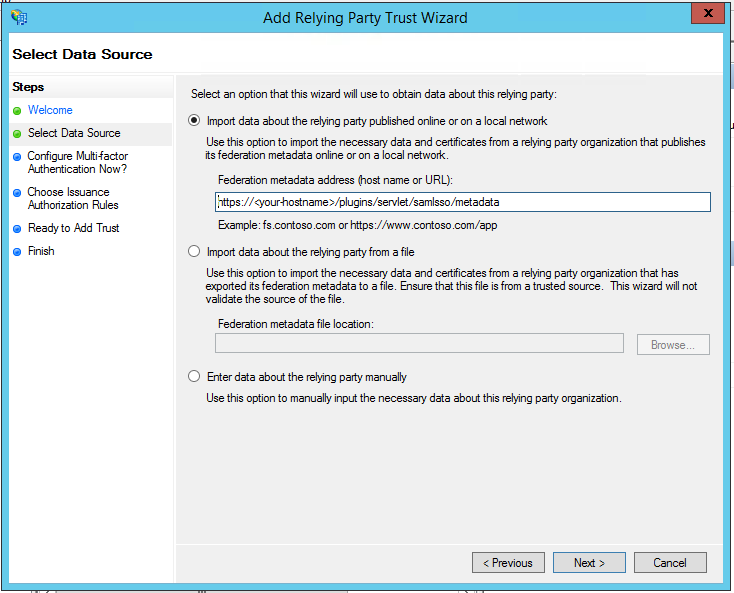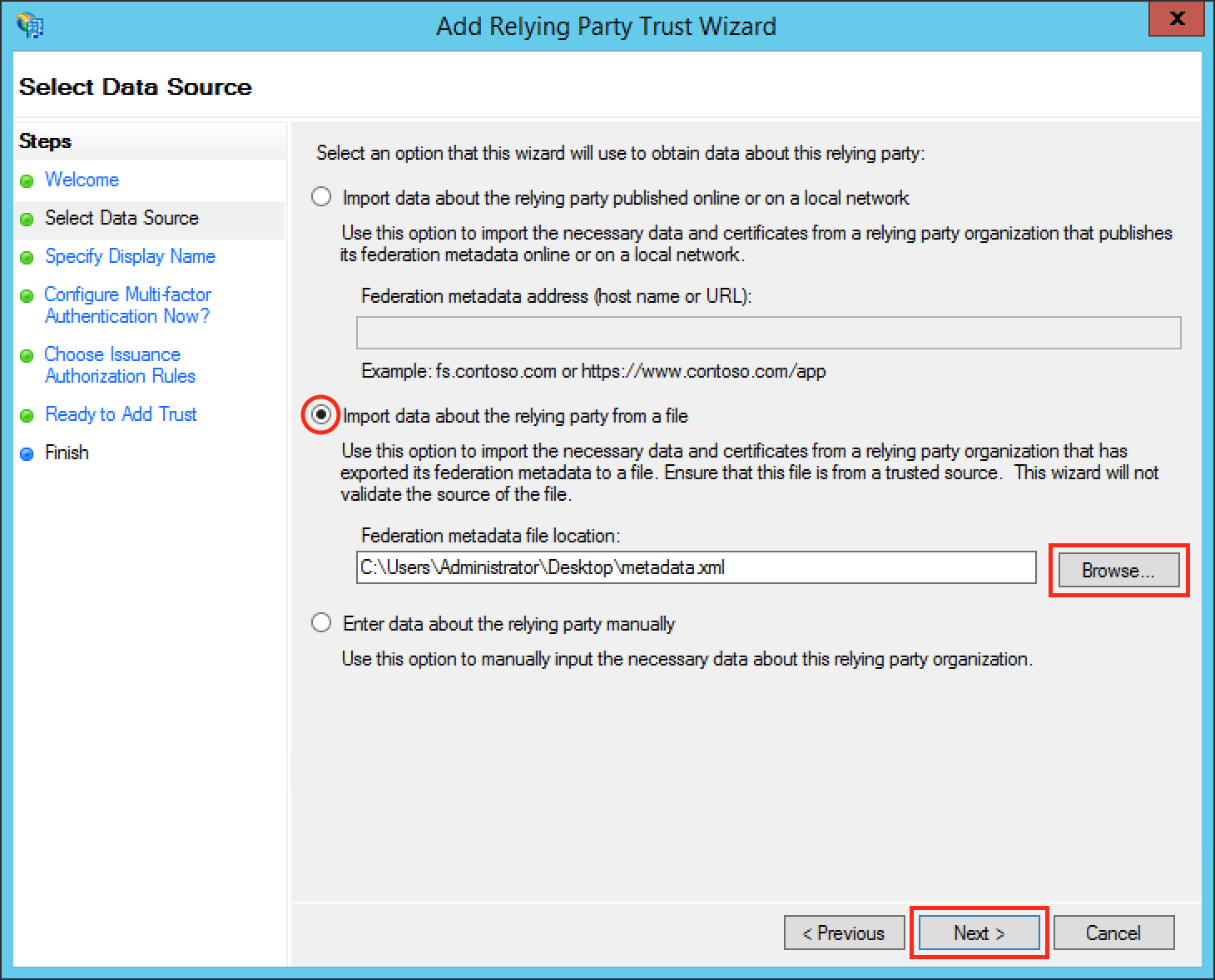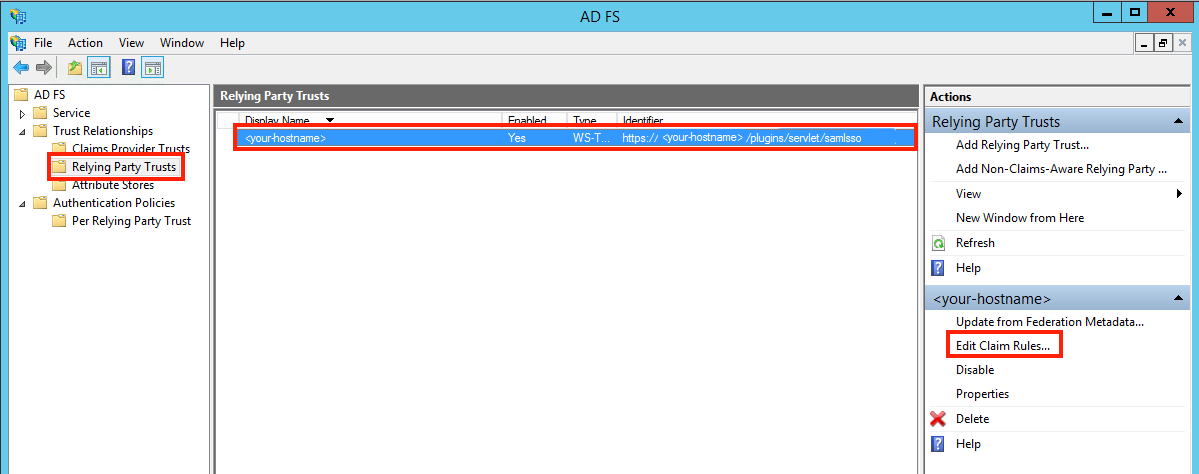Setup SAML SSO with AD FS (Jira)
Video Guide
The video below is an installation guide for setting up SAML SSO for JIRA Server and Data Center and Confluence Server and Data Center with ADFS (see on YouTube).
Setup Guide
This setup guide describes how to complete the initial setup for Jira SAML Single Sign On (SSO) Add-on for Server and Data Center with AD FS, applicable for Add-on version from 2.0.0. If you need any further support please feel free to contact us here.
#Step1 Install the Add-on | #Step2 Configure the Add-on (A-E) | #Step3 Setup the AD FS (A-E) | #Step4 Test | #Step5 Enable login redirection |
|---|
Prerequisites
ADFS 2.0/2.1/3.0/2016
Jira Sever or Data Center must be accessible via HTTPS. See https://confluence.atlassian.com/jira064/running-jira-over-ssl-or-https-720411727.html for instructions.
This is necessary because ADFS accepts only HTTPS-URLs for SAML endpoints.
Step 1: Install the Add-on
Click Add-ons under Jira Administration on the top right corner of your Jira interface. Then, you will be taken to Atlassian Marketplace. Search for SAML SSO and click on Free Trial to install.
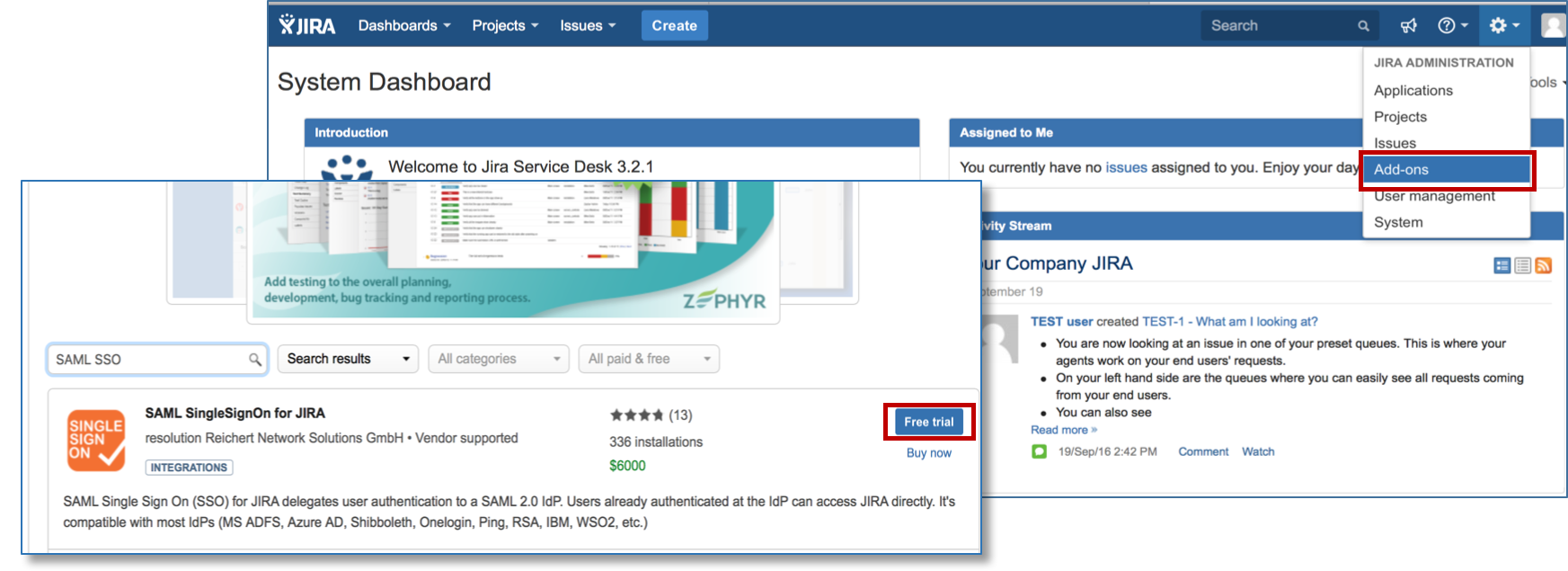
After installation succeeded, click on Manage, then choose Configure. Now, you are on the Add-on configuration page and the first step of the setup wizard will appear.
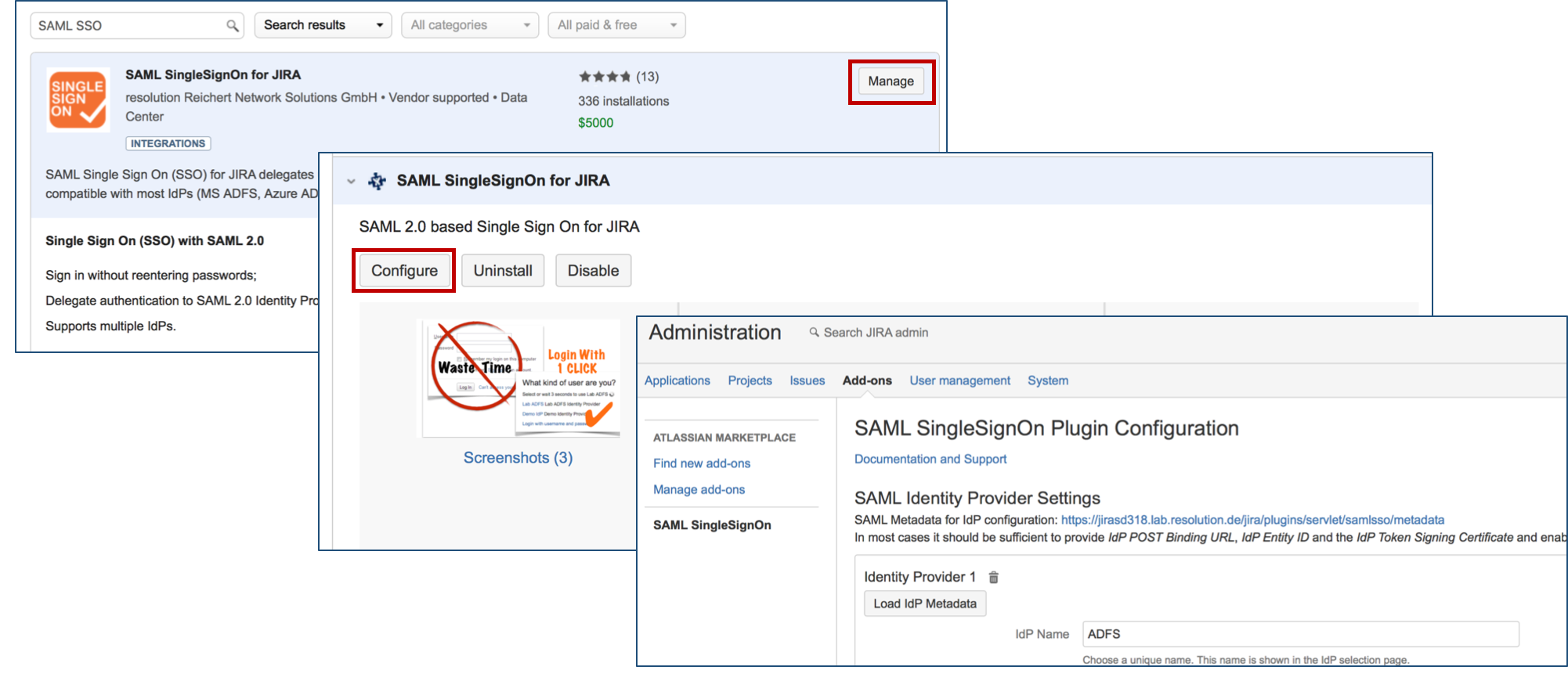
Step 2: Configure SAML SSO for Atlassian Server and Data Center
Substep A: Add new IdP or import config
Since Version 2.0.0, our Add-on offers an intuitive configuration wizard that is presented on first start. In the first step it's possible to import an existing configuration or to start with a fresh configuration. Click on Add new IdP to start the wizard.
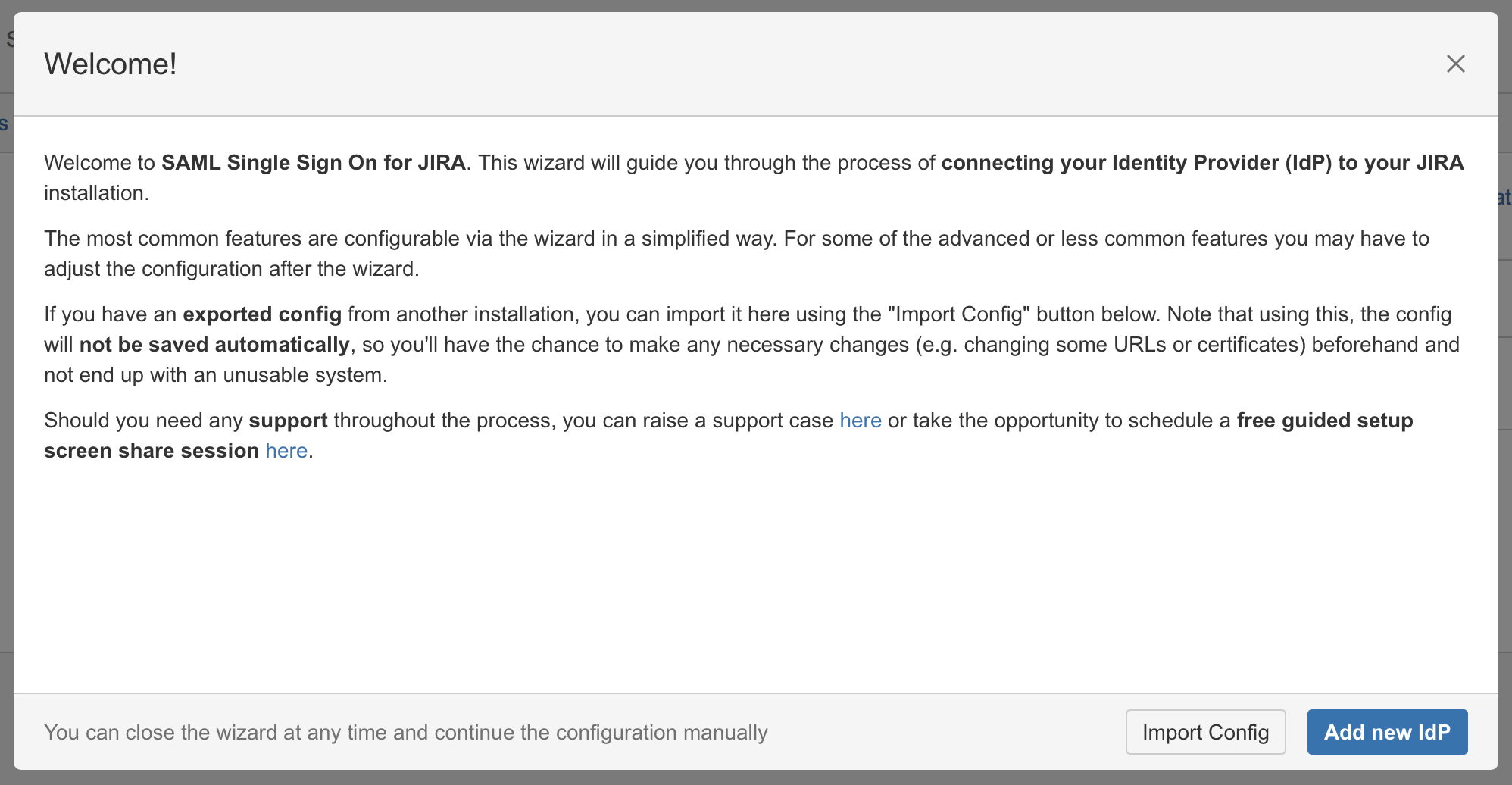
Substep B: Choose your SAML Identity Provider
Select Microsoft AD FS as IdP Type and click on Next.
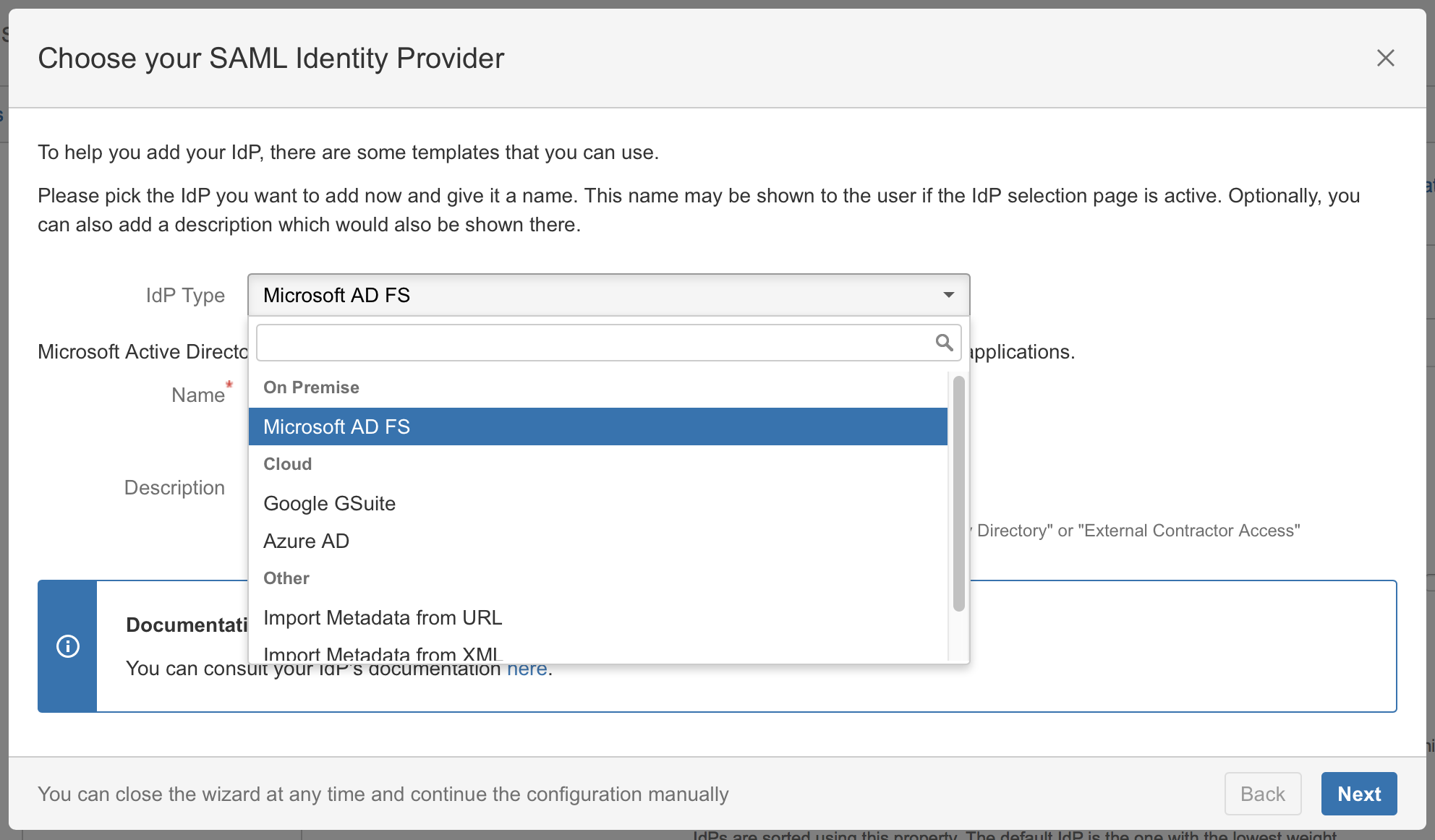
Substep C: Import SAML IdP Metadata
The recommended way to setup the ADFS is to import ADFS Metadata. The Metadata URL from ADFS is automatically detected from the hostname of the AD FS that has been entered.
Check Accept all if your IdP's https-certificate is not in your JIRA instance's trust store.
Click on Import.
If for some reason the AD FS Metadata is not accessible via this URL, you can always go back to substep 2B to import the metadata from an XML file or configure the IdP manually.
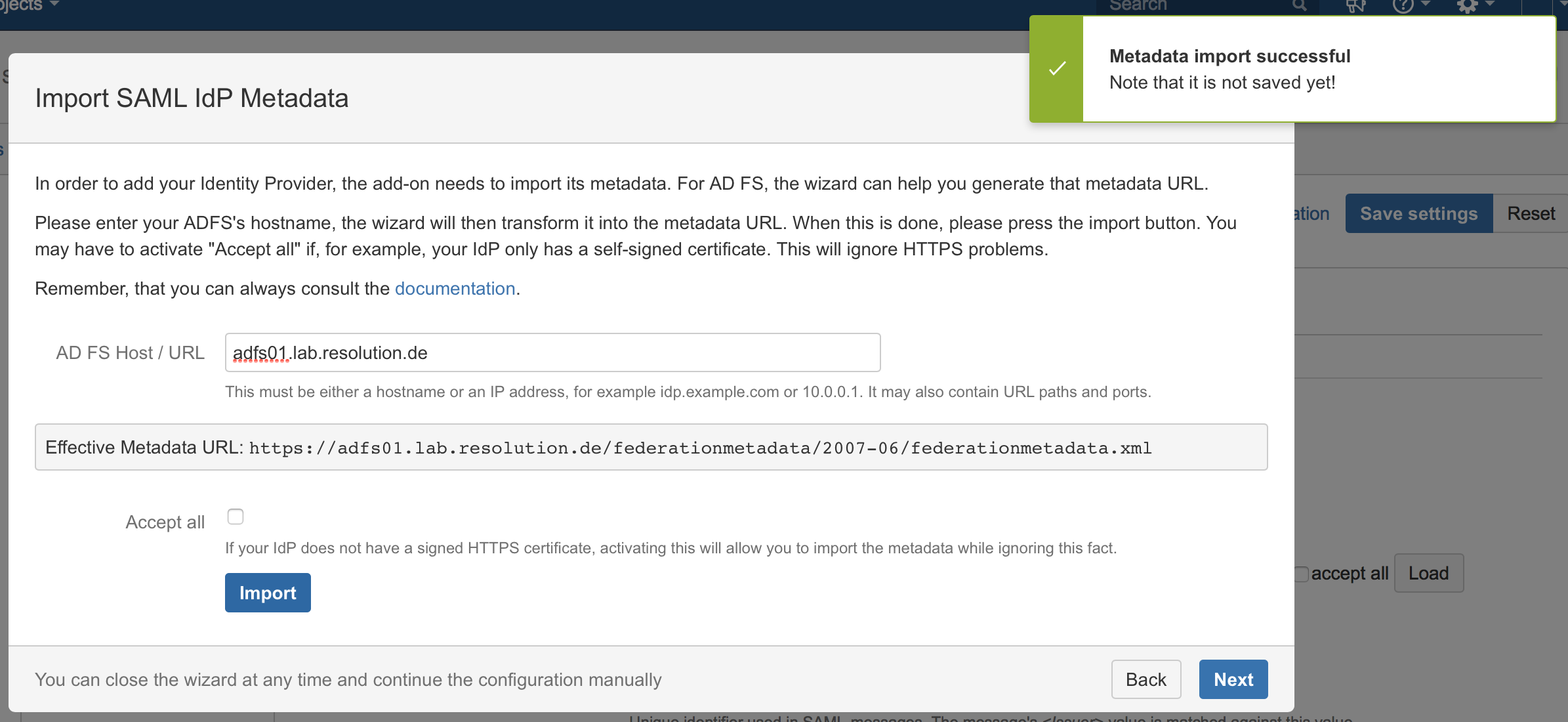
Substep D: User ID attribute and transformation
It's recommended to leave this option checked as we will later configure the AD FS to use the Name ID attribute. Simply click on Next.
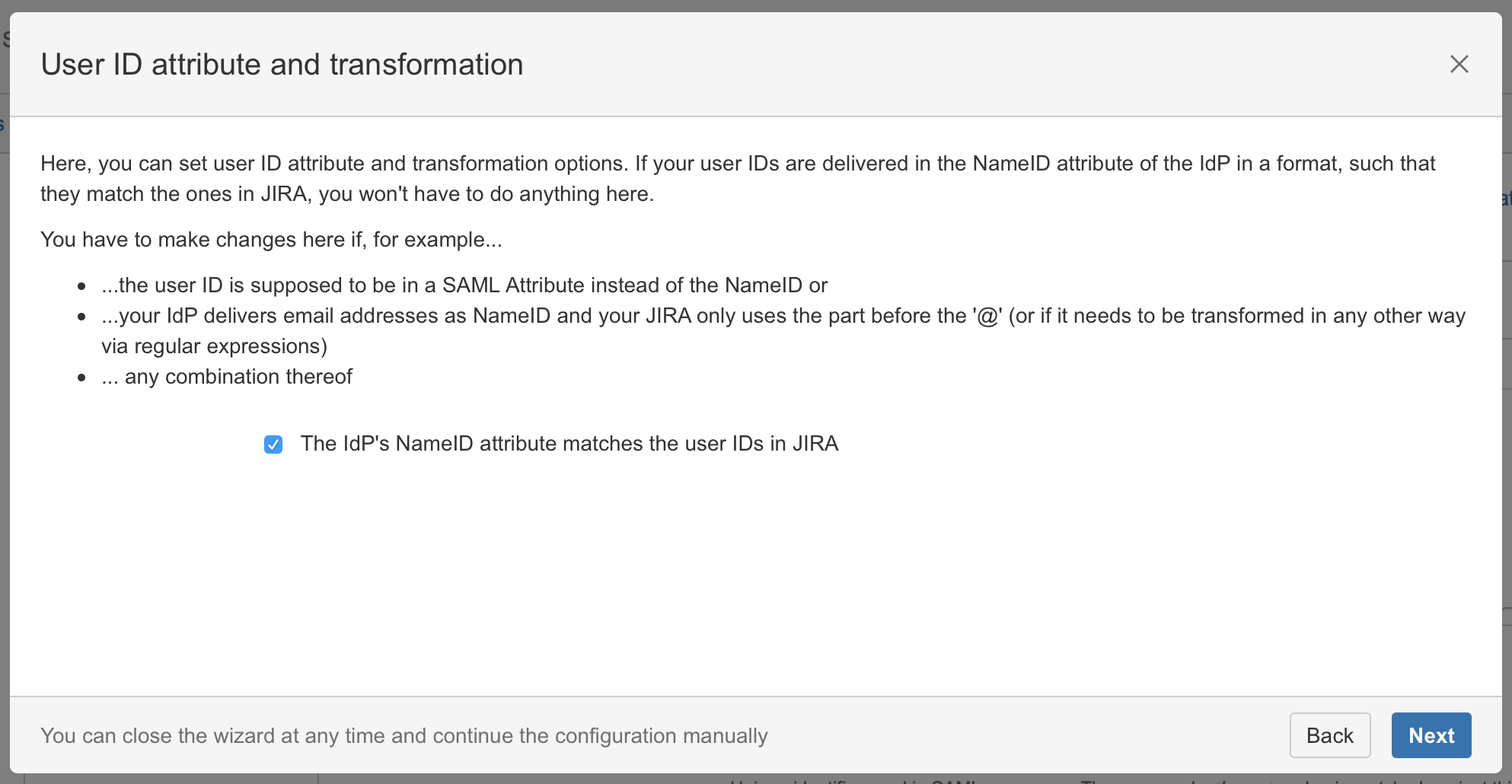
Substep E: Default group assignment
If you want to assign a default group check Enable user creation or update and define the default group in the User Group field. If a user logs in using SAML, he will be added to the groups specified in the User Groups section. This applies to all users. The user is assigned to these groups in addition to the groups in the SAML-response's attribute.
Click on Save & Next to continue with the configuration of your AD FS.
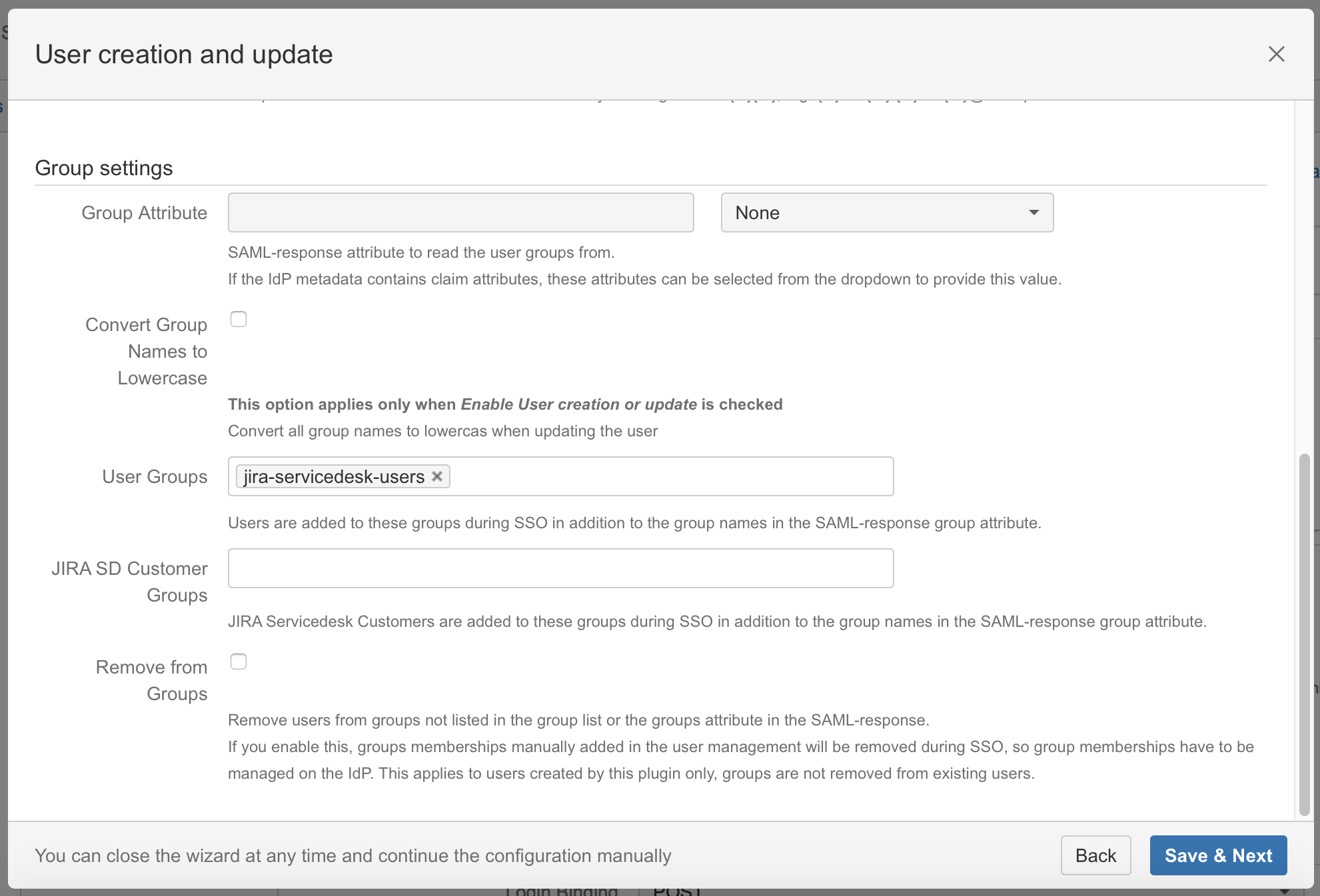
The standard group in Jira 7 is depending on which Jira Version you are using:
JIRA Version | Standard group |
|---|---|
JIRA Core | jira-core-users |
JIRA Software | jira-software-users |
JIRA Service Desk | jira-servicedesk-users |
Step 3: Setup the ADFS
Substep A: Copy/Download the SAML Metadata URL
Substep A1:
Copy the SAML Metadata-URL from your SAML Single Sign On config page - or, if your AD FS has no connection to this instance do Substep A2.
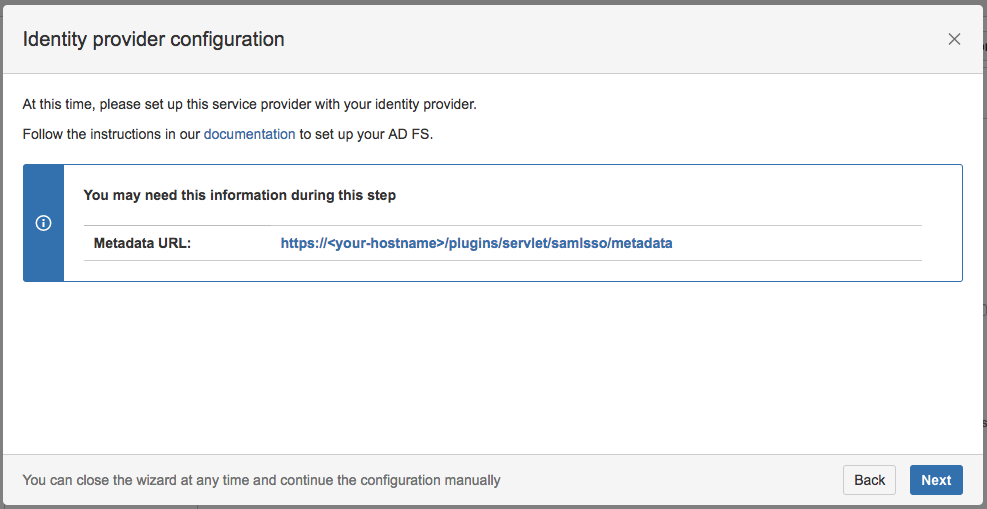
Substep A2:
Save the linked metadata.xml of the SAML Metadata URL and move the saved metadata.xml to your ADFS to a location of your choice. The most common way is to open the SAML Metadata URL via browser and save the page/file as XML. This steps differentiate between all possible browsers. Try another browser if you have problems with that step.
Substep B: Start the Add Relying Party Trust Wizard
The rest of Step 2 will be completed in AD FS.
Open the AD FS 2.0 Management Console and select Add Relying Party Trust to start the Add Relying Party Trust Wizard.

Click the Start Button to start the wizard.
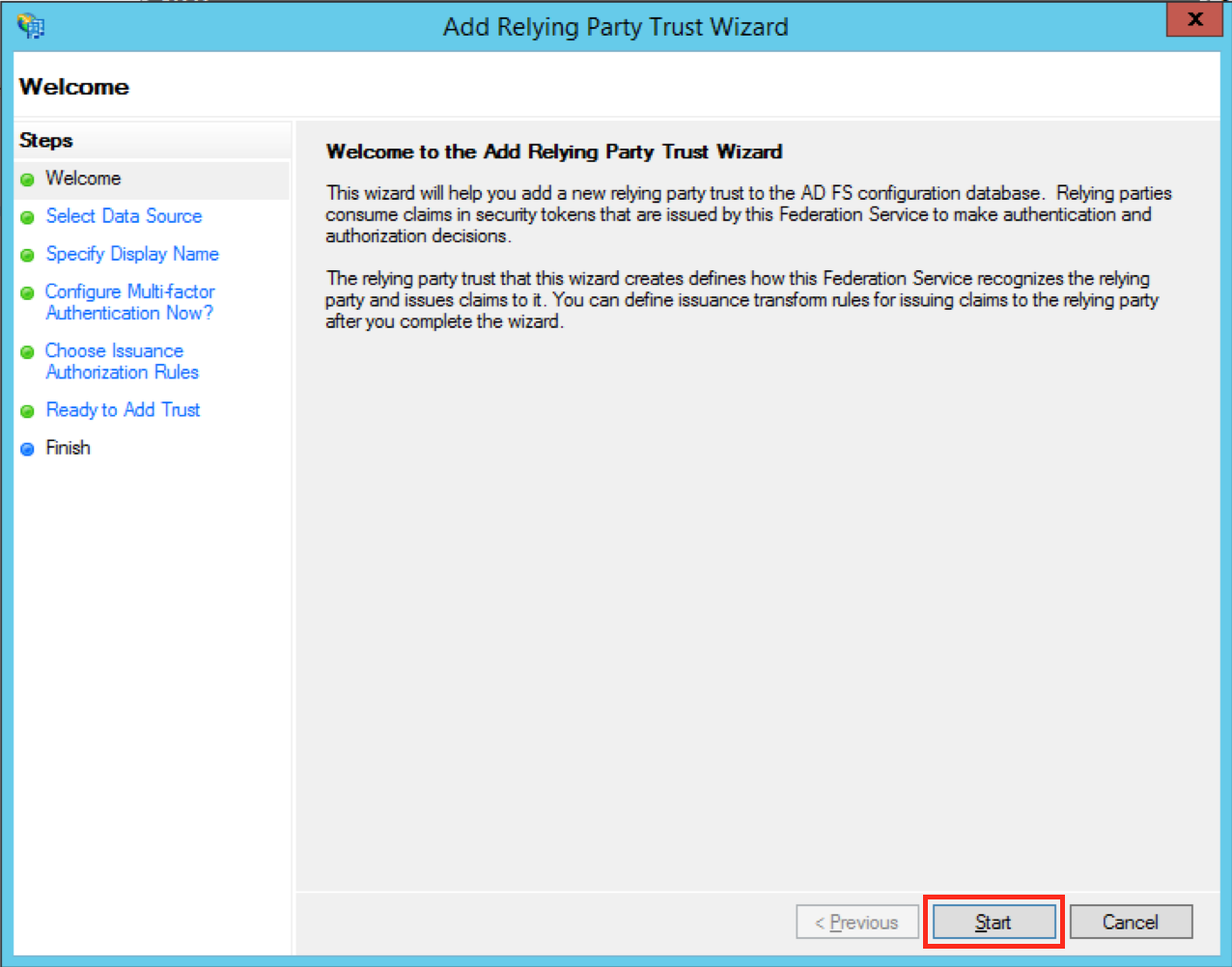
Substep C: Insert your SAML Metadata
Substep D: Finish the Add Relying Party Trust Wizard
Fill the field Display name with a name of your choice.
Click Next.
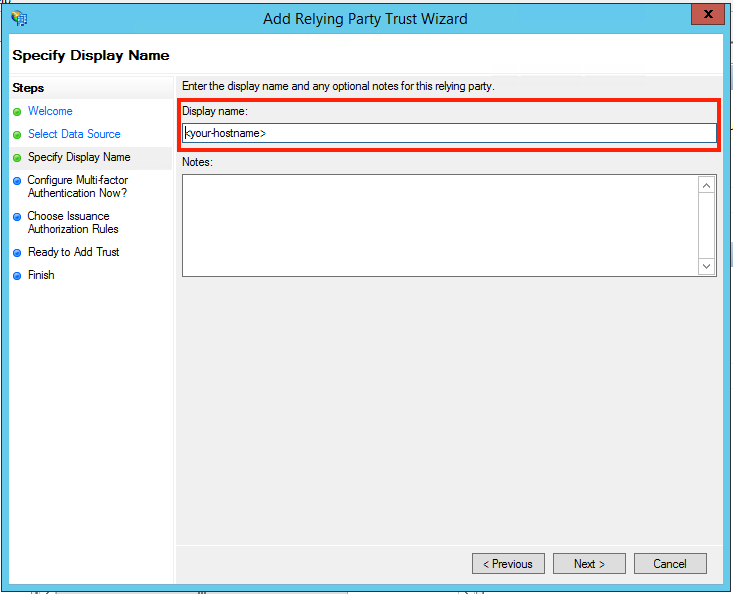
Select I do not want to configure multi-factor authentication settings for this relying party trust at this time.
Click Next.
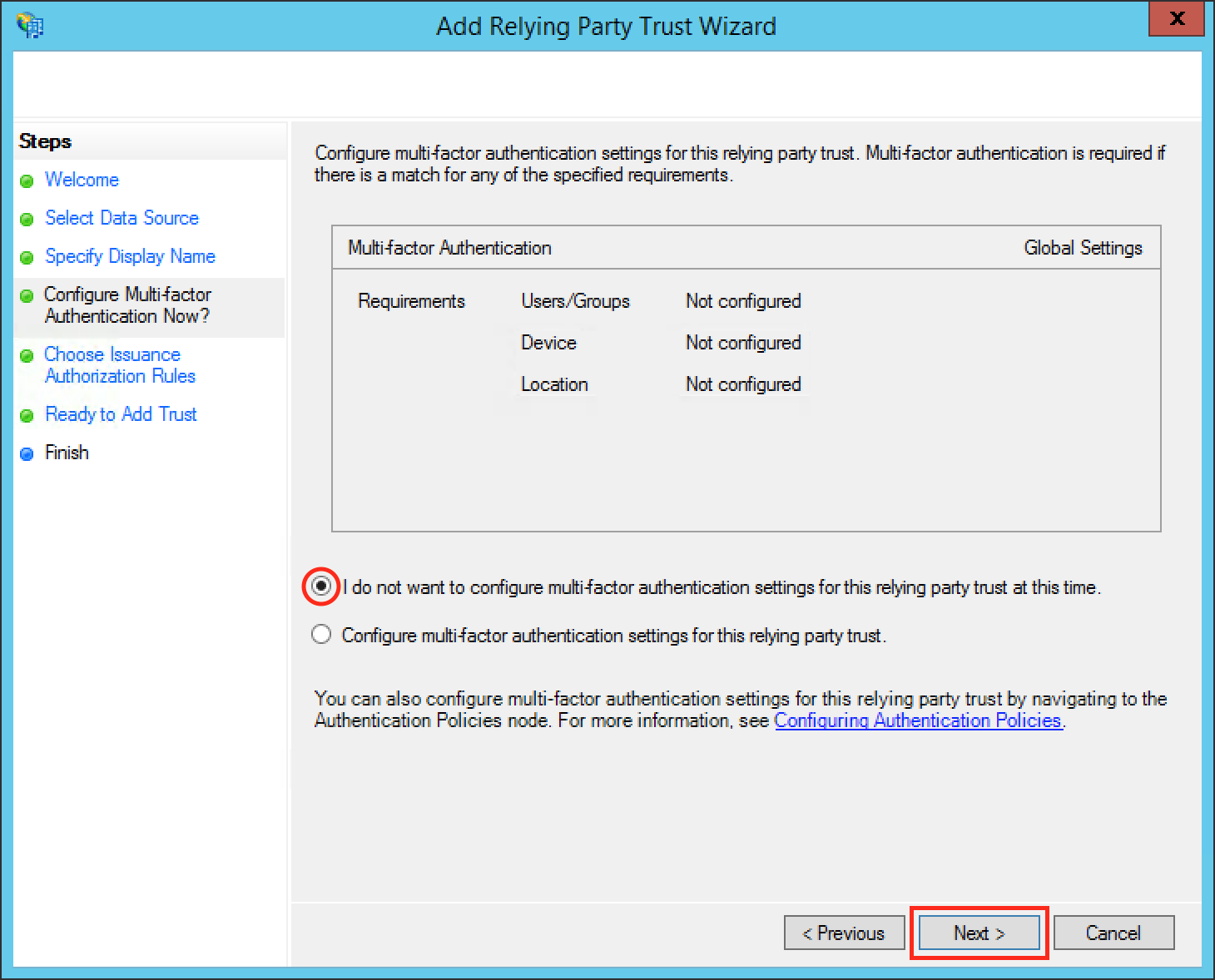
Select Permit all users to access this relying party.
Click Next.
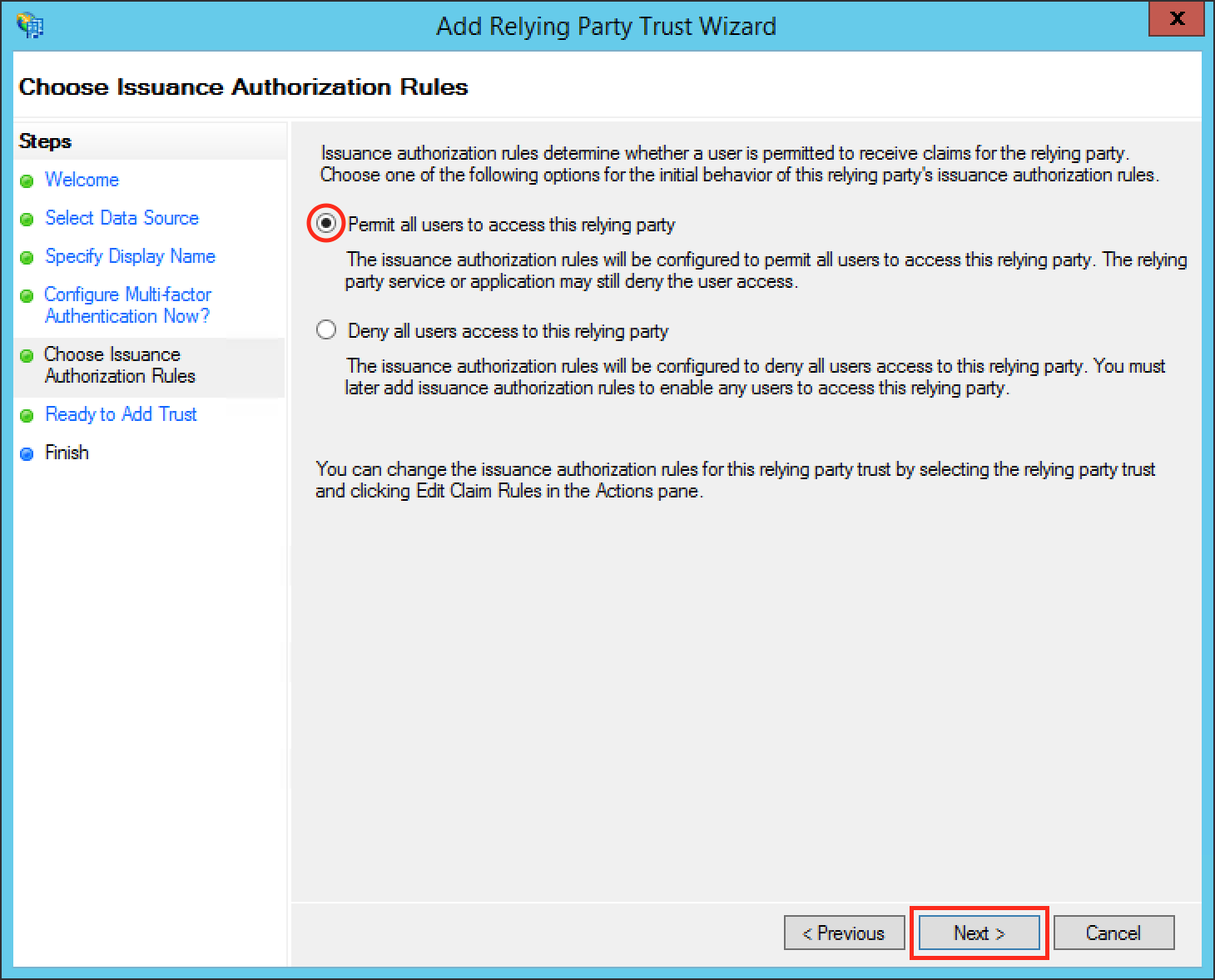
Click Next.
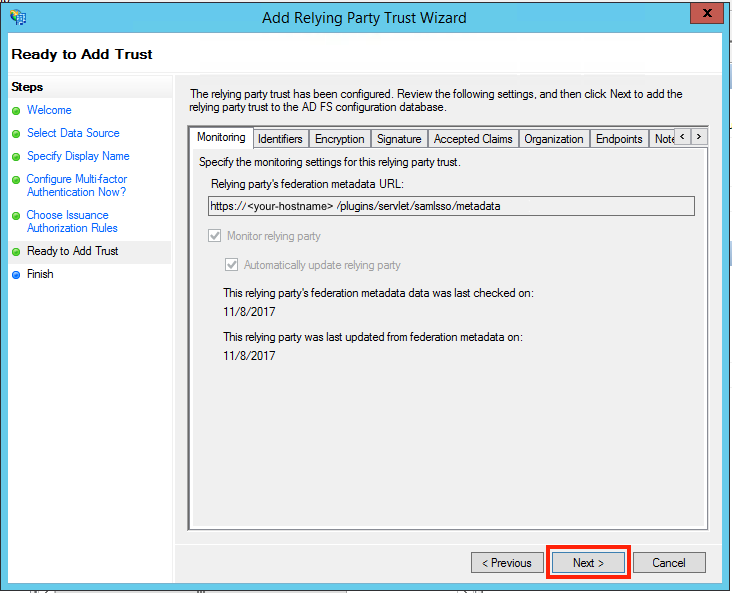
If an error is appeared after clicking on Next button, check if you have added the same relying party already.
Check the Open the Edit Claim Rules dialog for this relying party trust then the wizard closes checkbox to open the Edit Claim Rules dialog after closing the wizard.
Click Close to finish the Add Relying Party Trust Wizard.
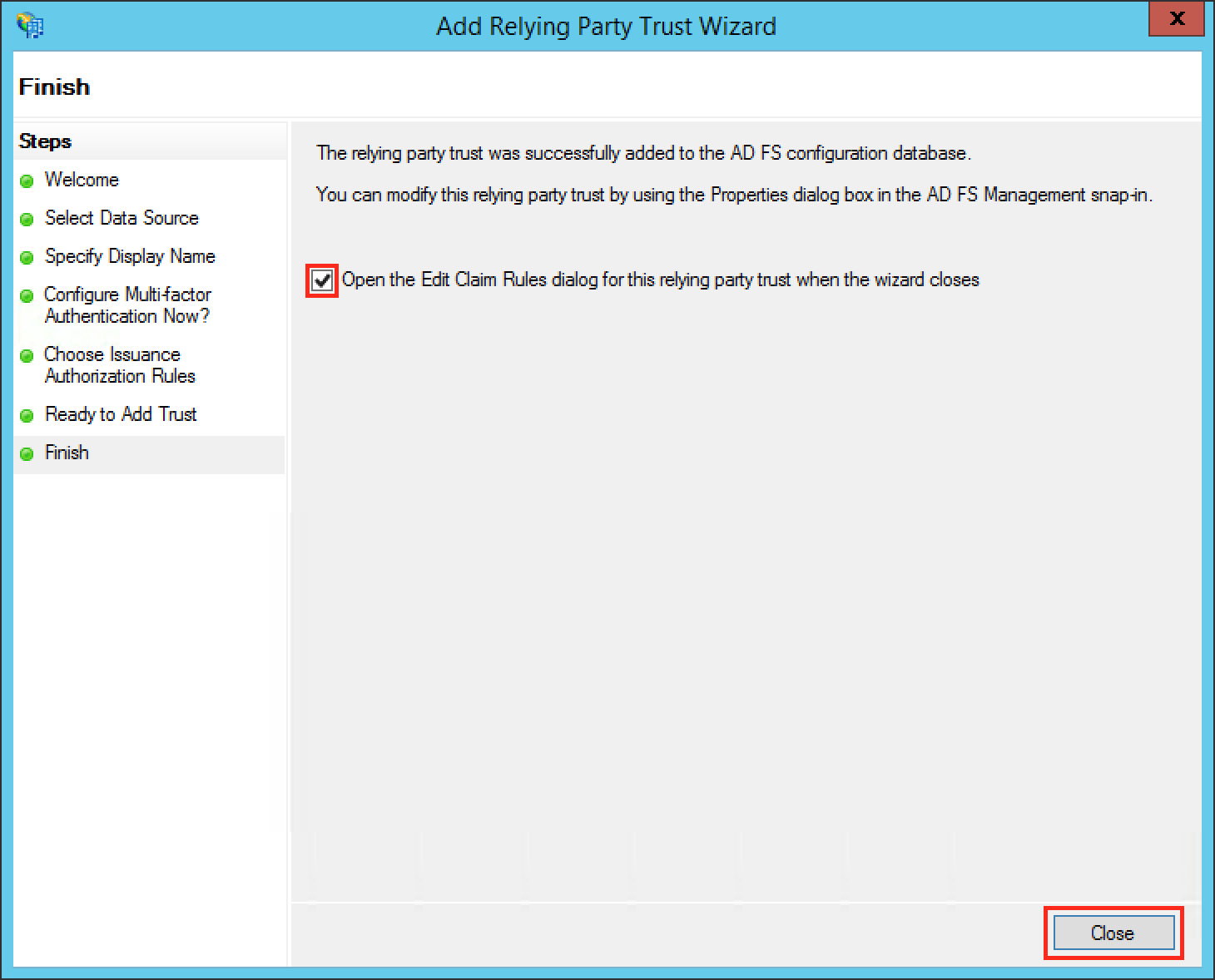
Substep E: Add Name ID as Claim Rule
The Name ID (on the normal case) from the SAML Response is required to authenticate users. So we need to add a claim rule on ADFS, which add the Name ID in every SAML Response from ADFS.
Otherwise, continue from here.
Click the Add Rule... Button to open the Add Transform Claim Rule Wizard.
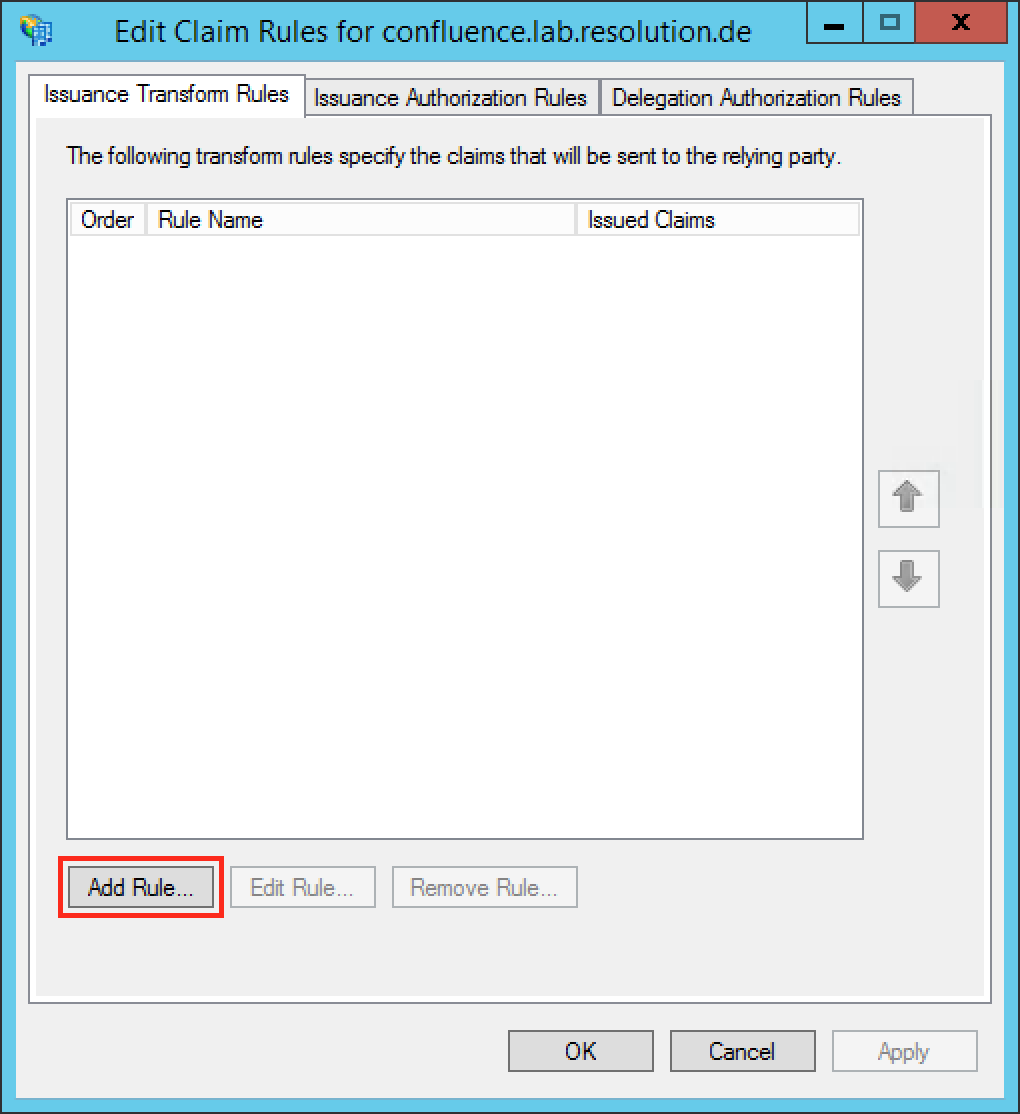
Select Send LDAP Attributes as Claims in the Claim rule template drop-down list.
Click Next.
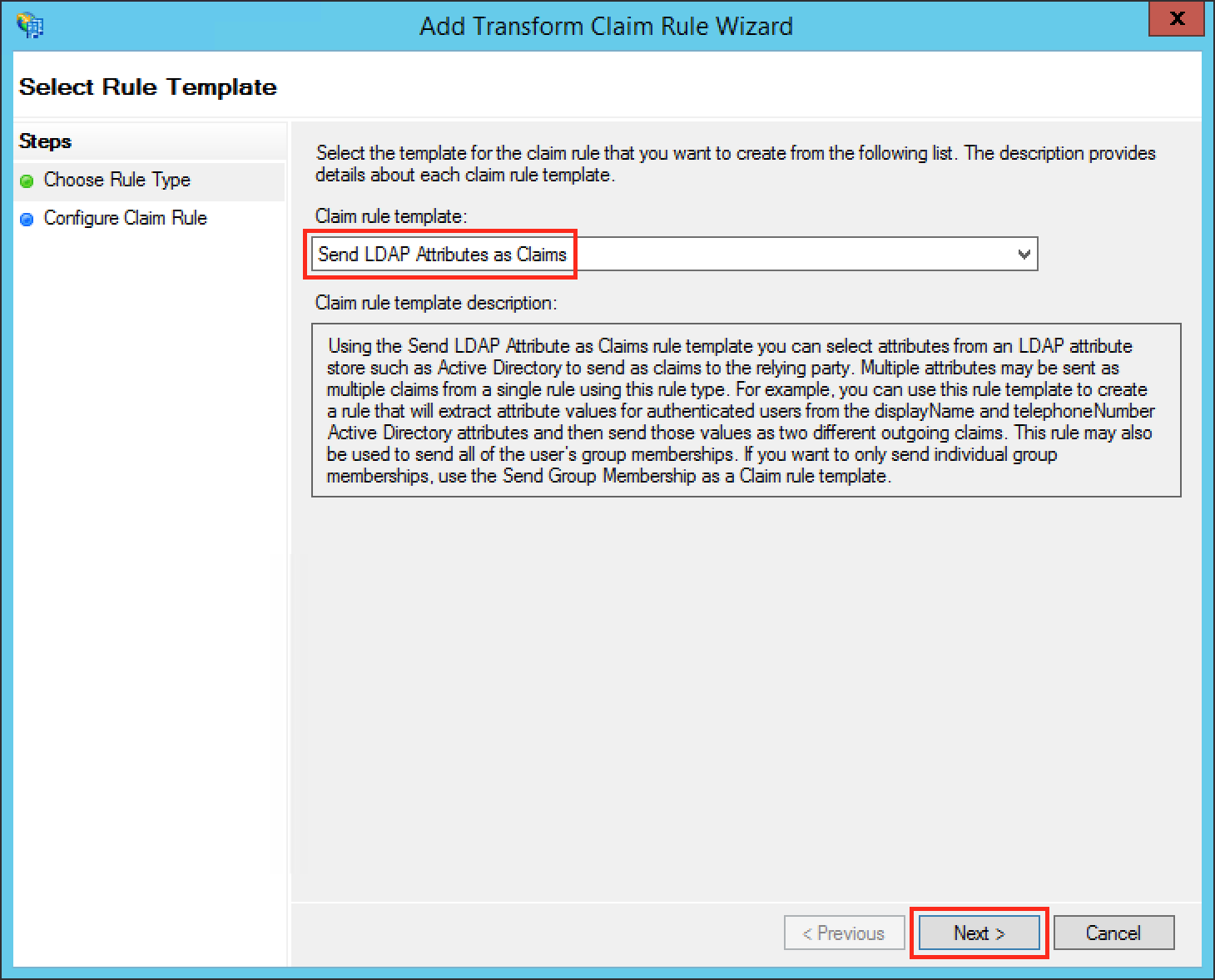
Fill the field Claim rule name with a name your choice.
Select Active Directory in the Attribute store drop-down list.
Select your appropriate LDAP Attribute in the first drop-down field from LDAP Attribute (Select or type to add more). In this example we are using the Windows login name attribute SAM-Account-Name as Name ID.
Select Name ID in the first drop-down field from Outgoing Claim Type (Select or type to add more).
Click Finish to complete the Add Transform Claim Rule Wizard.
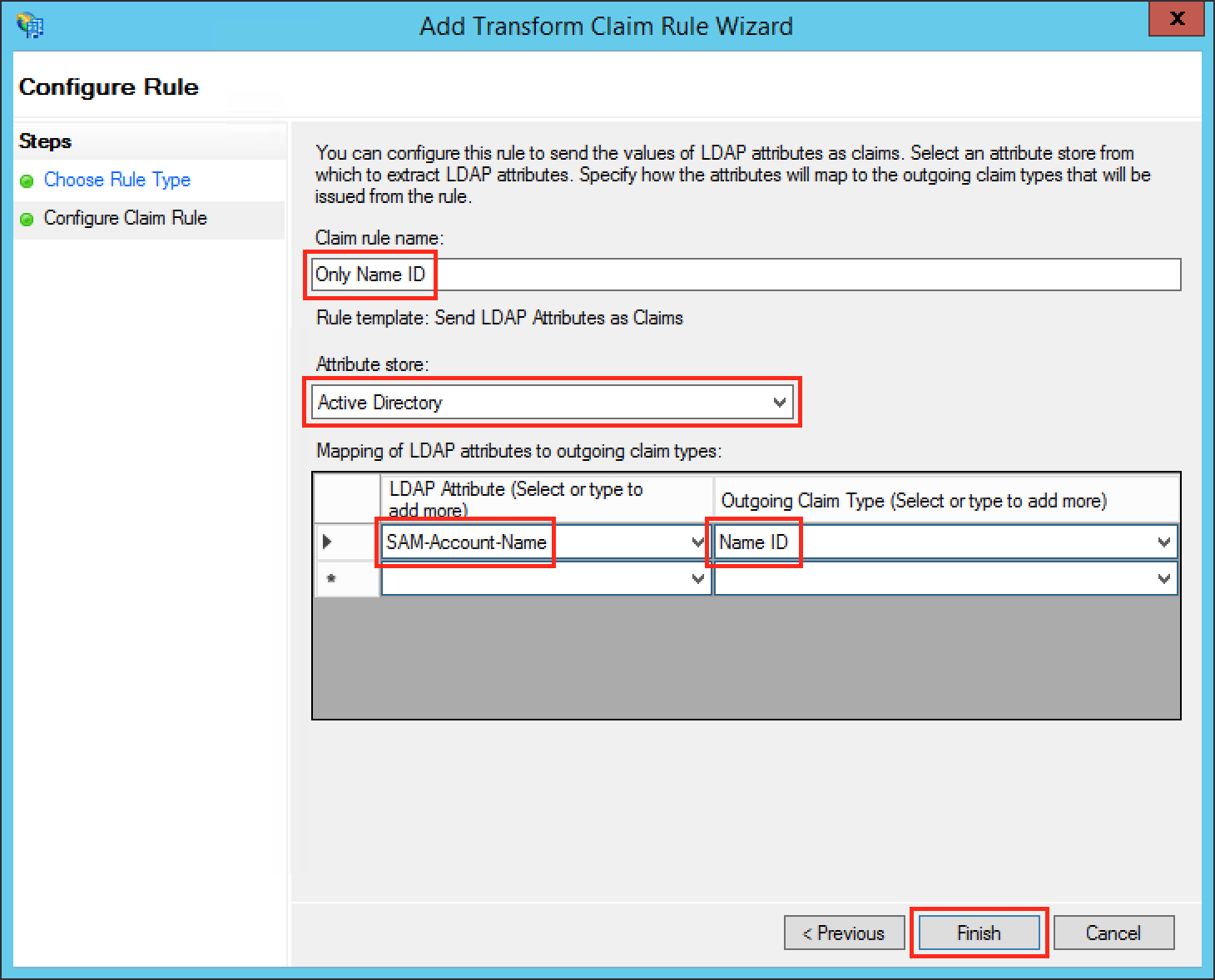
Check if your new rule has been added to the Edit Claim Rules dialog. Try again Step E if it has failed.
Click Apply to save your settings.
Click OK to finish.
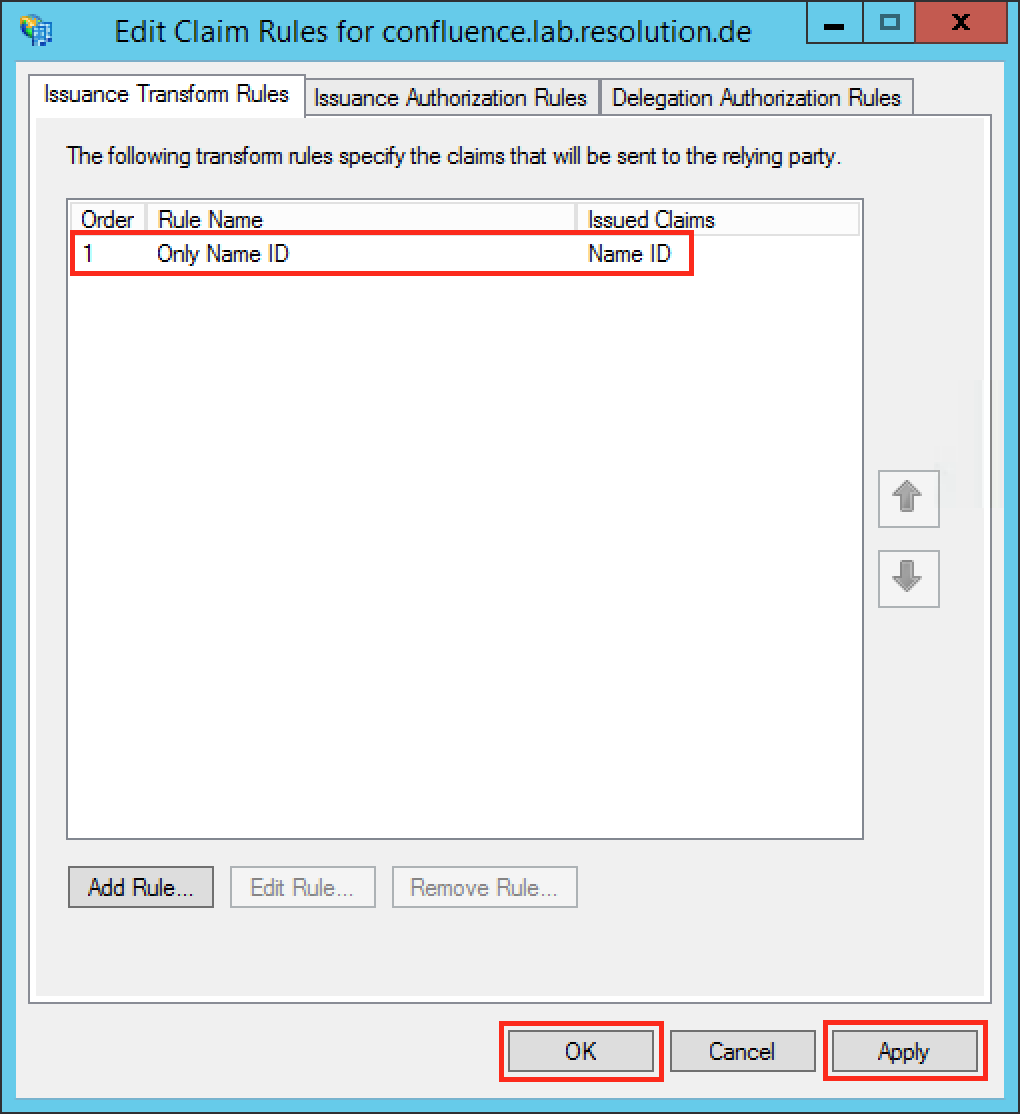
Step 4: Test
You are now able to perform a test with an authentication tracker, to see if your configuration is working as intended. To start the test, click on the Start test button, copy the displayed link, paste it into a new incognito / private browsing window, and execute a login with Identity Provider. The status of the authentication process is permanently update in the wizard.
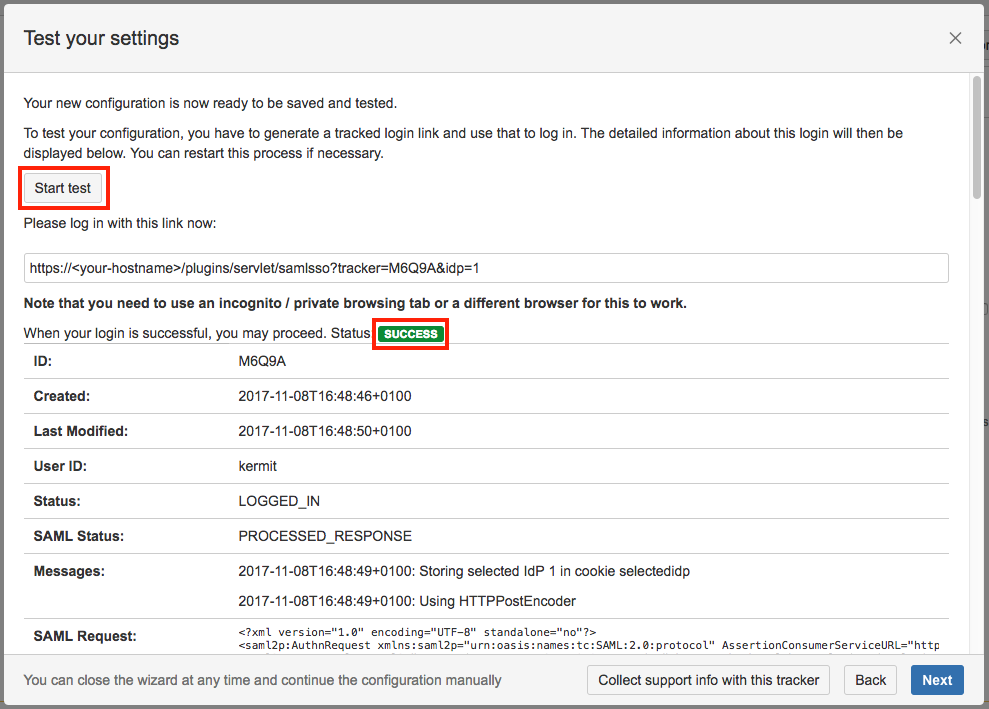
Step 5: Enable login redirection
If the authentication test was successful, it is now safe to activate the redirection on login.
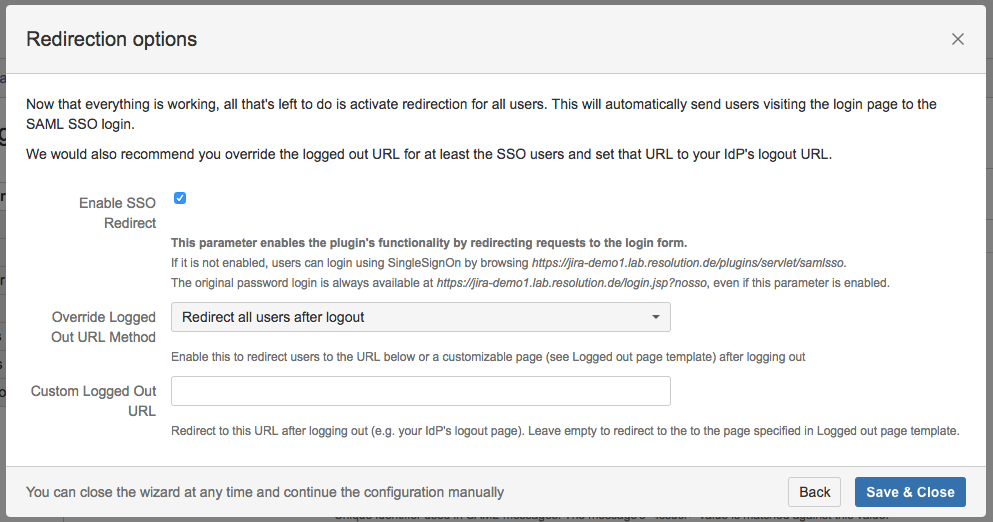
Click on Save & Close. The Add-on is now configured and ready to use.
If Enable SSO Redirect is enabled, you can login to JIRA manually by browsing https://<your-JIRA>/login.jsp?nosso. Use this URL if you need to login a local user unknown to the ADFS or if there are any issues with Single Sign On.

